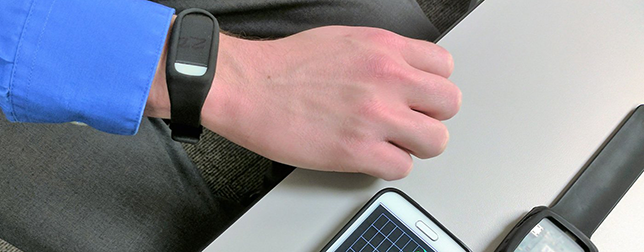In today’s conventional treatments, lack of continuous insight into the patient’s progress, adherence to medications, and relapse rates constitute a big hurdle for success. When it comes to smoking cessation treatment, drugs alone, without behavioral intervention, may not help people to quit. Major limitations of traditional smoking cessation treatment approaches include:
- Poor long-term patient engagement and lack of emotional involvement
- Treatment gaps resulting in poor adherence and high relapse rates, and
- Dependence on voluntary reporting
Read more This Canadian Startup is Developing a Wearable That Could Prevent Drug Users From Overdosing
Wearables embedded with advanced sensors coupled with advanced information collection and analysis techniques may help overcome the limitations in smoking cessation treatment, such as:
Constant visibility and transparency. A continuous flow of wearable-generated data will allow doctors to learn about smokers’ physical and emotional states, while gaining continuous insights on smoking patterns. Additionally, they will benefit from constant awareness of treatment adherence, with information on number of cigarettes smoked, where and where cigare ttes were smoked, and the patient’s emotional state that may lead to smoking – doctors can observe this via the galvanic skin response; a person’s skin temperature rises in stressful situations.
ttes were smoked, and the patient’s emotional state that may lead to smoking – doctors can observe this via the galvanic skin response; a person’s skin temperature rises in stressful situations.
Advanced analytics and predictive capabilities. Emerging technologies such as Artificial Intelligence (AI) and machine learning can be utilized to apply predictive analytics in order to anticipate and prevent smoking episodes in real-time.
Automated remote monitoring. This is very important in smoking cessation treatments. Self-reporting poses a major obstacle for already stressed out smokers trying to quit. To a doctor, knowing a smoker’s habits and patterns is crucial to make adjustments in treating each patient. Wearable sensors can help to understand an individual’s smoking gestures, thereby allow passive monitoring of his smoking patterns. Passive patient monitoring in this case will eliminate the patient’s burden of self-reporting. This is a win for doctors who gain visibility and at the same time relieves patient of self-reporting burden.
Real-time impact on undesired smoking habits. Mobile app or wearable-enabled communication method may help healthcare providers to intervene in real-time – with alerts, messages, and personalized cognitive behavior therapy – all to help stop smoking lapses and boost treatment adherence.
Read more DyAnsys Gets FDA Clearance For Its Wearable Device to Treat Opioid Addiction
Conclusion
Besides wearable-based and machine learning-driven solutions, a hardware-agnostic design is crucial. This will enable maximum flexibility and universal deployment, regardless the type of smartwatch a user owns, eg. Android or iOS.
IoT and wearable-based information gathering techniques and advanced machine learning will have a major impact on the future of healthcare. These technologies will also revolutionize smoking cessation treatment and help dramatically curb the disturbing statistics of smoking – still, the leading preventable cause of death in the United States and throughout the world.












